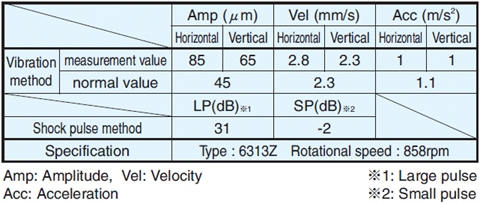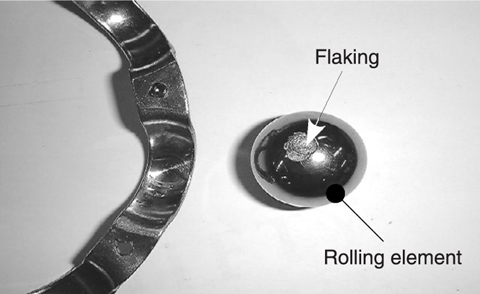Fig.8-5 Generation of pressure wave, relation between strength of pressure wave and oil film thickness
Table 8-1 A example of measurement result in bearing


Fig.8-6 State of rolling element in bearing
In the Tokai Reprocessing Plant, lots of blowers are used to keep radioactive materials in a controlled area, and pumps are used for cooling water circulation to maintain appropriate temperature in high-level radioactive liquid waste vessels. This rotating equipment plays an important role in safety maintenance of the nuclear facilities. It is very important for stable operation of the rotating equipment to monitor the bearing damage caused by inadequate lubrication as well as imbalance and misalignment.
In the Tokai Reprocessing Plant, the bearings were diagnosed by a vibration method (VM), because measuring instruments for management of rotating equipment needed to be portable and easy to operate. However, it is difficult to determine the state of a bearing by the VM when there is vibration of other parts of the rotating equipment. Troubles in bearings are caused by defective lubrication, but it is very difficult to quantitatively measure oil film thickness during the monitoring for lubrication of bearings by the VM. Therefore, it is very important to improve the bearing condition monitoring system. We examined new diagnosis methods, by measurement of operation sound or pressure waves, to solve the problem with VM. As a result, diagnosis by pressure wave was adopted.
Pressure wave and vibration are generated by rolling elements hitting the raceway in a bearing. The strength and number of pressure waves generated are changed by oil film thickness or damage to the bearing, as shown in Fig.8-5. The shock pulse method (SPM), which uses this characteristic, is a new technique which is starting to be used widely, and is well suited to quantitative management of lubrication in bearings.
Table 8-1 shows an example of use of the SPM to diagnosis of a bearing in the rotating equipment. The bearing was diagnosed as being able to keep operating by VM. However, the bearing was diagnosed as faulty by SPM. When the state of this bearing was examined, the flaking was found to have occurred on the rolling element as shown in Fig.8-6.
SPM is well suited to bearing management, because this method has high response to changes in the state of a bearing. However, SPM has a possible problem, that it may demand excessive replacement because it is based on indirect conditions caused by faults, so it is necessary to obtain data on bearings which have replacement threshold values.
Bearings should be managed by the diagnosis of VM as well, because in the case of bearings which have been appropriately lubricated for a long period, there is a possibility that a fatigued or worn-out bearing does not generate a high pressure wave. Such maintenance for bearings will enhance understanding of the state of bearings. It is possible to improve maintenance function by combining SPM and conventional VM.
<Previous: 8-1 | Next: 9 Development of Decommissioning and Radwaste Treatment Technology >